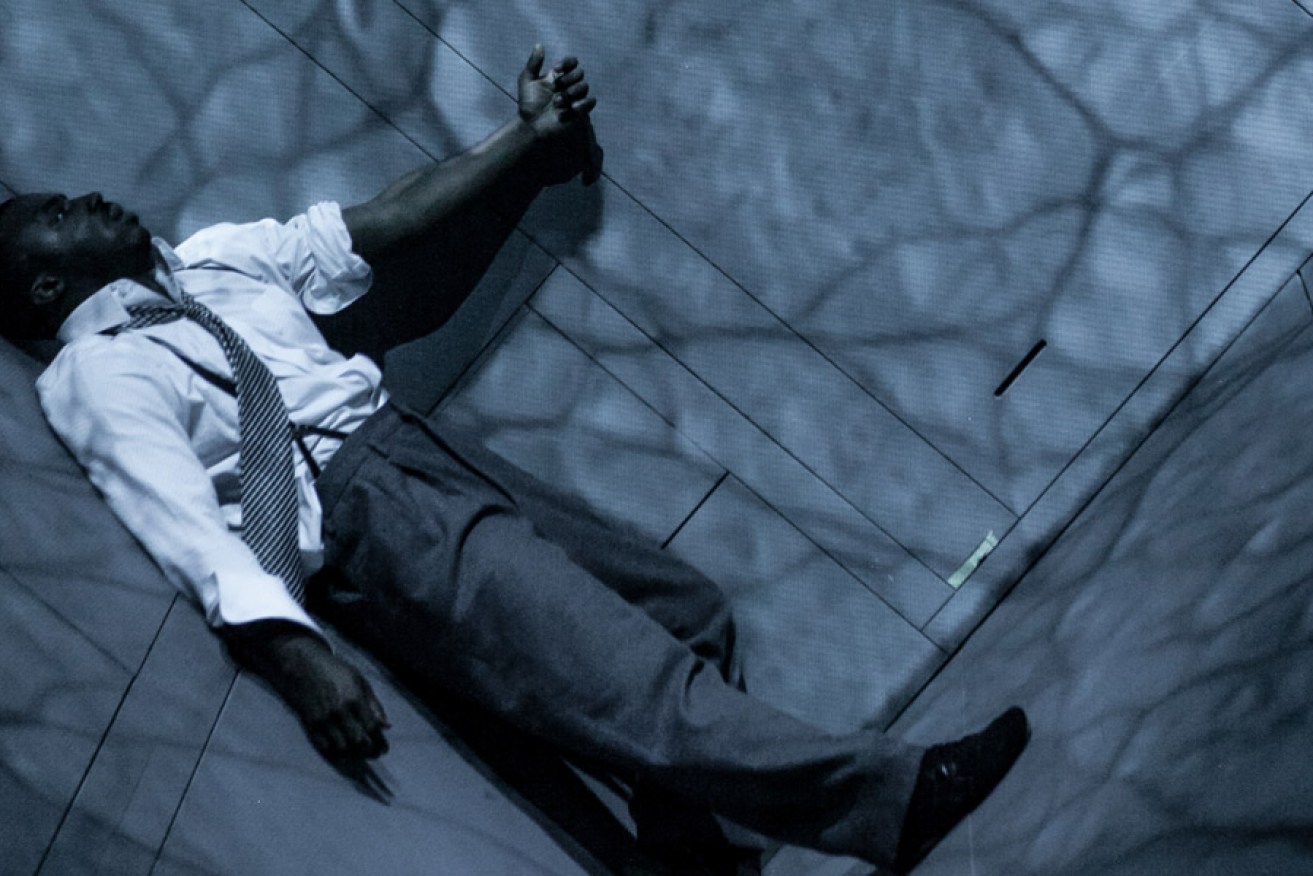Needles and Opium

Wellesley Robertson III as Miles Davis on the sloping set of Needles and Opium. Photo: Nicola Frank-Vachon
Director Robert Lepage’s Needles and Opium is a theatrical masterpiece that leaves a lasting impression on audiences because of its visual beauty and engaging technical innovation.
The story intertwines references to French writer and film-maker Jean Cocteau and American jazz musician Miles Davis and their respective drug addictions, a Québécois man who is suffering from the pain of a lover leaving him, and connections between America and Paris.
Suspended centre-stage at the Dunstan Playhouse is a large cube minus the fourth wall; this transforms, by means of projections, into a night sky, a 1949 Parisian apartment, a New York street, a recording studio, and many more locations and images. Hidden windows and doors allow the two actors to slip away into the darkness, appear unexpectedly in the clouds, respond to video footage of people in a street or to talk with video recordings of others as if they were on stage.
Experienced Quebec performer Marc Labrèche is the central figure, pining for his former lover and struggling in a way that is similar to an addict trying to separate himself from heroin. Labrèche’s skill as a comedian is demonstrated when his character, an actor, takes advice and instructions from a director when he is recording the commentary for a documentary about French actress and singer Juliette Greco, and again in the miscommunication, misunderstandings and mispronunciations that frequently occur between Americans and Europeans during phone calls.
Equally, Labrèche is able to move us in an instant with his sudden emotional hurt and sadness. He presents Cocteau’s writings with great thought and presence, sometimes while suspended mid-air.
Wellesley Robertson III presents himself as Miles Davis and, like Labrèche, creates mood and atmosphere while standing, sitting or lying on physically challenging slopes and angles.
Few words are needed to convey Davis’ presence in Paris, his surprise at being able to publicly have a relationship with Greco (a white woman), and his gradual decline through drug addiction, which forces him to sell his beloved trumpet to a pawn shop.
As well as the emotional demands, the physical challenges must be enormous for both men throughout this show.
It is impressive that Lepage – acclaimed writer, director and actor – has been able to revisit and re-stage his 1991 work, employing more visual devices which have been made possible by technological advances.
Needles and Opium is quite positive in its view of the artists and their creativity, just by its own artistic way of setting scenes, using light and rotating the set to provide new perspectives about the forces that inspire us, motivate us and even drive us to despair.
The use of Miles Davis’ cool jazz trumpeting enhances the poignancy of the acting and helps set the atmosphere of 1949 Parisian meeting places. In Needles and Opium, the integration and synchronisation of words, music, visuals and acting reflect Lepage’s awareness of the need for all theatrical elements to be combined for a total and satisfying experience.
Needles and Opium is the kind of show that makes a festival exhilarating, vibrant and indelibly printed in heart and mind.
Needles and Opium was presented by Ex Machina at the Dunstan Playhouse as part of the Adelaide Festival, which is now finished.
Adelaide Festival hub
Click here for InDaily’s stories and reviews from the 2014 Adelaide Festival, including WOMADelaide and Adelaide Writers’ Week.




